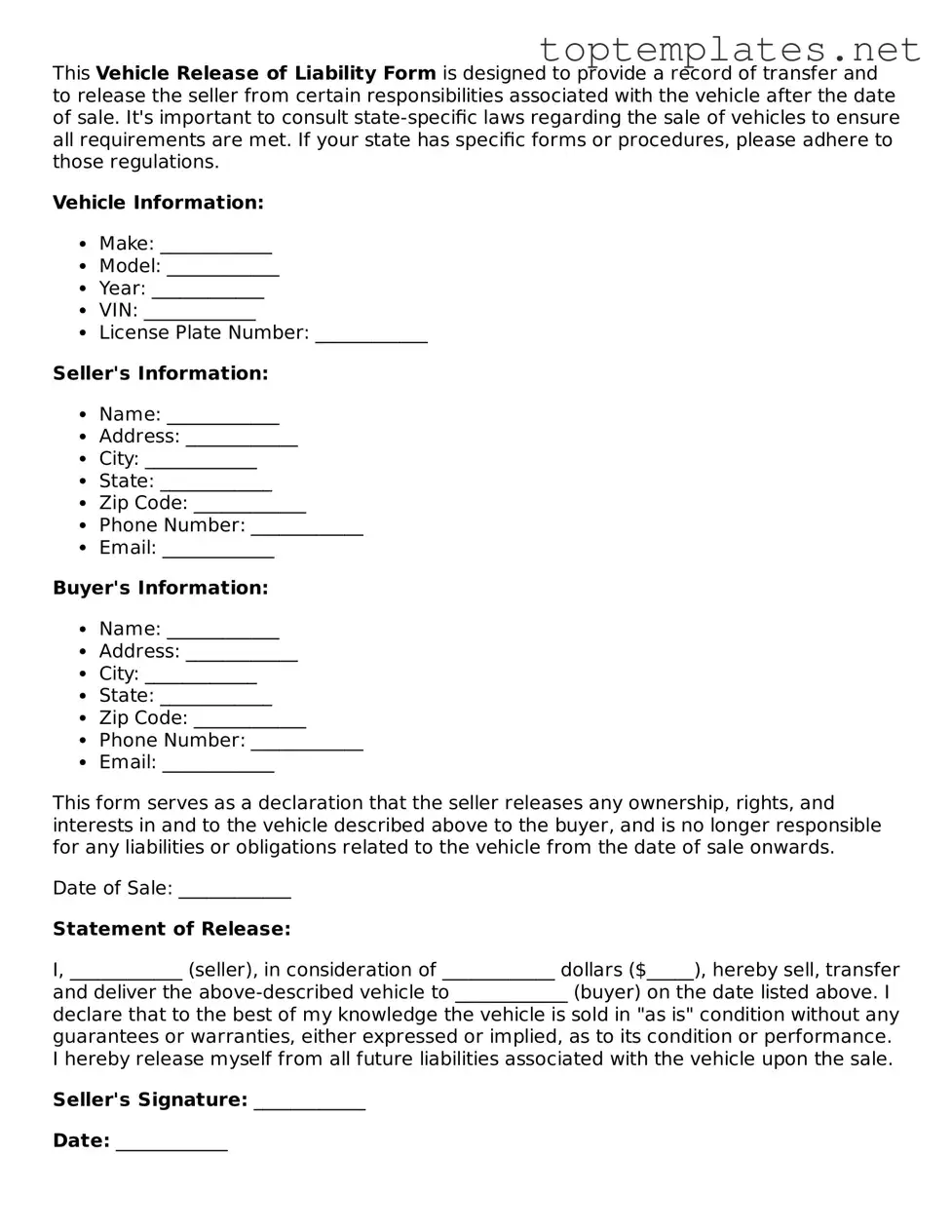What is a Vehicle Release of Liability form?
A Vehicle Release of Liability form is a document that a seller of a vehicle submits to the state's department of motor vehicles (DMV) to officially report the sale or transfer of ownership of a vehicle. It helps to protect the seller from liability for any incidents or violations involving the vehicle after the sale has occurred.
When should I submit a Vehicle Release of Liability form?
It is crucial to submit this form immediately after the sale or transfer of the vehicle. Each state may have its specific deadline, but generally, it is recommended to submit the form within 5 to 10 days following the transaction to ensure timely release of liability.
Where can I find the Vehicle Release of Liability form?
The form can usually be found on your state's DMV website. Alternatively, you can visit a local DMV office to obtain a physical copy. Some states may also offer electronic submission options through their official DMV websites.
Is there a fee to submit a Vehicle Release of Liability form?
Most states do not charge a fee for filing a Vehicle Release of Liability form. However, it's always wise to check with your specific state's DMV for any applicable fees or requirements as they can vary by state.
What information is needed to fill out the Vehicle Release of Liability form?
You will generally need the vehicle's identification number (VIN), the sale date, the buyer's name and address, and your (the seller's) name and address. Ensure to provide accurate and complete information to avoid processing delays.
Can I submit the Vehicle Release of Liability form if the license plates remain on the vehicle?
Yes, you can submit the form even if the license plates remain on the vehicle. However, some states recommend or require that sellers remove and keep their plates before selling a vehicle. It's advisable to consult your state's DMV for guidance on license plate provisions specific to your transaction.
What happens if I do not submit a Vehicle Release of Liability form?
Failing to submit the form may result in you being held liable for any subsequent use, misuse, or violations involving the vehicle, such as parking fines, toll violations, or even crimes. Therefore, timely submission is pivotal in protecting yourself from future liabilities.
Can I correct a mistake on a Vehicle Release of Liability form after submitting it?
Yes, it is possible to correct mistakes on the form after submission. The process for doing so varies by state; some may allow corrections to be made online, while others might require a written request or a visit to the DMV. It's important to address any errors promptly to ensure your release from liability is properly recorded.
Should I keep a copy of the Vehicle Release of Liability form?
Absolutely. It is extremely important to keep a copy of the completed and submitted form for your records. Having proof of submission and the details contained within the form can provide important legal protection in case of disputes or if the vehicle is involved in illegal activities after the sale.
